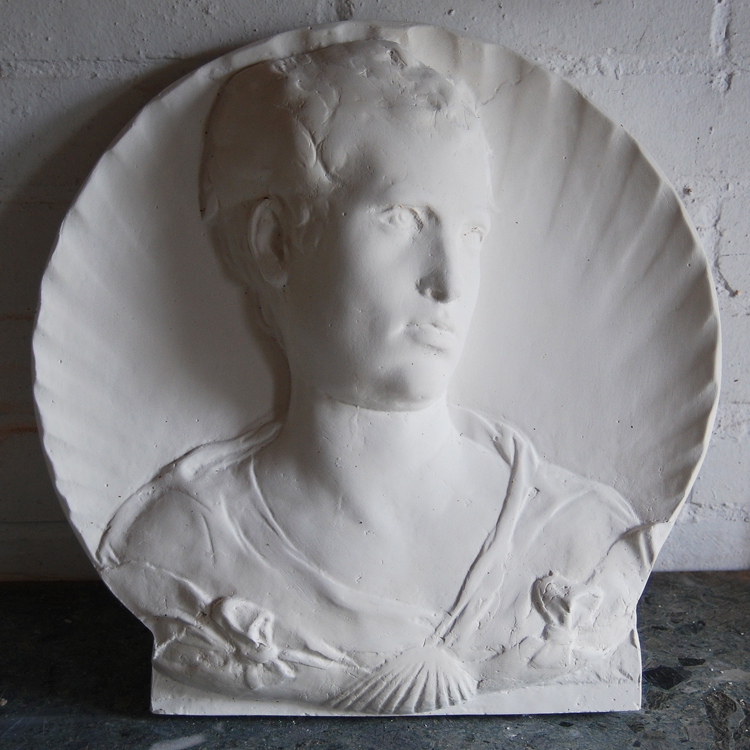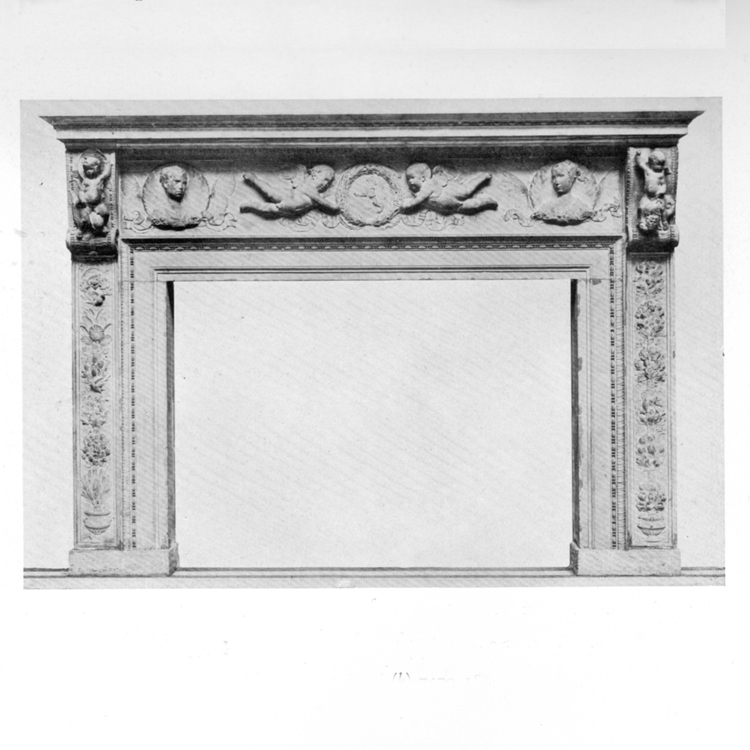No products in the basket.
A relief cast plaster plaque of Andrea di Bono,
cast from the Victorian piece-mould by Dominico Brucciani for the South Kensington Museum, the mould made directly from the mid fifteenth century carved sandstone chimneypiece by Desiderio da Settignano (1428-64) held at the museum,
the portrait head carved in deep relief turning a sinestra, the young man depicted with cloaked shoulders and framed within a scallop shell,
£360
In stock (can be backordered)
Domenico Brucciani (1815-1880) was born in Lucca, Italy, moved to London as a young man, by at least 1837, and soon became a revered formatore – plaster-caster. His business built up special links with both the British Museum and the South Kensington Museum (later re-named The Victoria & Albert Museum).
His most substantial commission for the South Kensington Museum was the casting of the Pórtico de la Gloria, the 12th-century façade of the cathedral at Santiago de Compostela, in 1866. This huge undertaking – and many others including, famously, Trajan’s column itself – followed the agreement forged by Henry Cole and Prince Albert at the Paris Exposition of the previous year, signed by all the Crowned Princes of Europe, to further the common man’s experience of sculpture in-the-round by the reciprocal casting of great European sculpture. What followed was the Cast Courts at prestigious museums across Europe and beyond; Brucciani was foremost among the formatore.
He taught sculpture, moulding and casting at the Royal College of Art (including National Art Training School) from 1853 to 1861.
His company, “D Brucciani & Co.”, with workshops in Clerkenwell, survived its founder with the Covent Garden outlet still operating into Edwardian times. A catalogue of their wares is held at The National Art Library. However, by the turn of the century, the direct casting of priceless sculpture was becoming frowned upon; travel across Europe was now much easier anyway – the common man could now use the train. The company faltered. In the 1920’s its casting workshops were subsumed by the Victoria & Albert Museum.
LASSCO is delighted to have saved a number of the original piece-moulds and to have cast from them for the first time in a century. The making of piece-moulds – a plaster negative jigsaw enabling a cast to be released by the careful removal of the solid mould in pieces – is today a lost art; it has been rendered redundant by pliant silicons. We have duly made a silicon mould in order to preserve Brucciani’s work. The accuracy and detail of the resulting casts, taken as they are directly from Settignano’s original carving is plain to see, and a delight.


